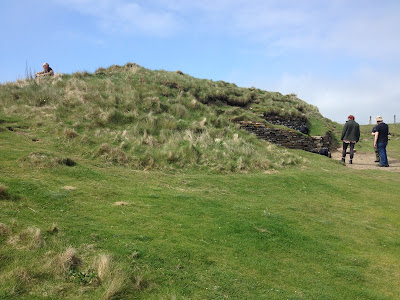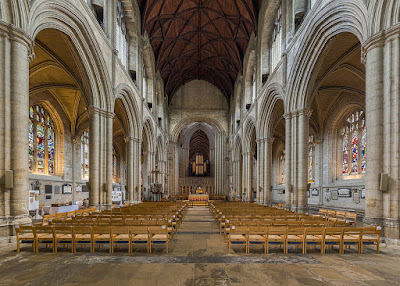Taversoe Tuick cairn was built on the
island of Rousay in Orkney. Like the dozens of other contemporary monuments
found all across the islands, it was built in the Neolithic Period, around
3300BC, at which time Orkney was home to the most advanced culture in Britain
and perhaps Western Europe.
Orkney’s tombs typically have traits in
common. They are built overlooking the sea, have a wide view over the
surrounding land, but are built into the hillsides so as to be barely
distinguishable from the surrounding landscape. They were not built to impress
the living who looked up at them, as later Bronze Age tombs were designed. They
were built for the eyes of the ancestors to gaze across the land where they
once walked and now guarded and reinforced their descendants’ right to live and
farm there.
The upper storey of the tomb
Each tomb is also unique, built to a
design chosen perhaps intuitively by the community it was to serve. Taversoe
Tuick was built on two levels, something found in only one other Orkney tomb. One
crawls through the long and low entrance passage to a chamber containing four partitioned
areas arranged in an arc, where the disarticulated bones of the deceased were
laid. The upper storey is reached by a separate entrance at the back of the
tomb and contained two chambers.
The tomb, discovered and opened in the 19th
century, was found to contain cremated human bones, the complete skeleton of an
adult, and flint and pottery artefacts. These were perhaps added during the
Bronze Age, after the Neolithic Orkney culture had collapsed and its monuments
ritually emptied, closed or destroyed.
The rear entrance to the upper storey.
Like many tombs, Taversoe Tuick was
built with a view of the sea and its entrance passage aligns to the highest
point on the small island of Gairsay to the south, which is marked with a
tumulus of possibly Bronze Age date. The Orkney people were sailors,
fisher-people and long-distance travellers and the sea was as important to
their way of life as the land. It is logical that the ancestor-spirits
contained in the tombs guarded the sea-ways as well as the land, and it is easy
to imagine a web of guardianship linking between tombs and islands and
landmarks the sailors used to guide them home, nourished by the generations of
knowledge the people had laboriously acquired. And that web still survives today.



















































